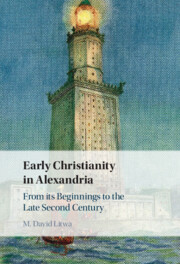171 results
Introduction
-
- Book:
- Neoplatonic Pedagogy and the Alcibiades I
- Published online:
- 16 May 2024
- Print publication:
- 23 May 2024, pp 1-11
-
- Chapter
- Export citation
A Reappropriation of the Joseph Story in Genesis 39 and Surah 12 for Contemporary Race-Discourse
-
- Article
-
- You have access
- Open access
- HTML
- Export citation
14 - Conversion and Literature
- from Part IV - The New Christian World
-
-
- Book:
- The Cambridge History of Old Norse-Icelandic Literature
- Published online:
- 08 February 2024
- Print publication:
- 29 February 2024, pp 291-312
-
- Chapter
- Export citation
I.8 - ‘Anonymous of Whitby’, The Life of Gregory the Great
- from Eighth Century
-
- Book:
- The Cambridge Anthology of British Medieval Latin
- Published online:
- 11 January 2024
- Print publication:
- 01 February 2024, pp 105-112
-
- Chapter
- Export citation
7 - Trespass to land and trespass to personal property
-
- Book:
- Contemporary Australian Tort Law
- Published online:
- 05 January 2024
- Print publication:
- 16 January 2024, pp 311-365
-
- Chapter
- Export citation
A Harrean perspective of theology
-
- Journal:
- Religious Studies , First View
- Published online by Cambridge University Press:
- 03 January 2024, pp. 1-13
-
- Article
-
- You have access
- Open access
- HTML
- Export citation

Early Christianity in Alexandria
- From its Beginnings to the Late Second Century
-
- Published online:
- 14 December 2023
- Print publication:
- 21 December 2023
5 - Augustine’s Place within the Eudaimonist Tradition
-
- Book:
- Augustine on the Nature of Virtue and Sin
- Published online:
- 10 January 2024
- Print publication:
- 23 November 2023, pp 163-206
-
- Chapter
- Export citation
8 - The End of the Matter
-
- Book:
- Paul and the Resurrection of Israel
- Published online:
- 02 November 2023
- Print publication:
- 23 November 2023, pp 323-347
-
- Chapter
- Export citation
Introduction
-
- Book:
- Paul and the Resurrection of Israel
- Published online:
- 02 November 2023
- Print publication:
- 23 November 2023, pp 1-36
-
- Chapter
- Export citation
23 - Religion and Nationhood
- from Part III - Intersections: National(ist) Synergies and Tensions with Other Social, Economic, Political, and Cultural Categories, Identities, and Practices
-
-
- Book:
- The Cambridge History of Nationhood and Nationalism
- Published online:
- 08 November 2023
- Print publication:
- 09 November 2023, pp 503-522
-
- Chapter
- Export citation
5 - Crisis and Conversion
-
- Book:
- The Mizo Discovery of the British Raj
- Published online:
- 12 October 2023
- Print publication:
- 02 November 2023, pp 172-205
-
- Chapter
- Export citation
3 - Adopting the Missionary
-
- Book:
- The Mizo Discovery of the British Raj
- Published online:
- 12 October 2023
- Print publication:
- 02 November 2023, pp 104-146
-
- Chapter
- Export citation
Chapter 33 - Of Converts, Collaborators and Apostates
- from Part V - Laudianism as Coalition: The Constituent Parts
-
- Book:
- On Laudianism
- Published online:
- 05 October 2023
- Print publication:
- 19 October 2023, pp 435-443
-
- Chapter
- Export citation
Chapter 5 - The Tree of Repentance and Its Fruits
- from Part I - Laudianism: Where It Came From
-
- Book:
- On Laudianism
- Published online:
- 05 October 2023
- Print publication:
- 19 October 2023, pp 85-92
-
- Chapter
- Export citation
5 - The Harbor on High
-
- Book:
- Knowledge, Faith, and Early Christian Initiation
- Published online:
- 11 October 2023
- Print publication:
- 19 October 2023, pp 114-133
-
- Chapter
- Export citation
Chapter 7 - Semi-conformity, Idolatrous Pollution, and Conversion
-
- Book:
- Religious Dissimulation and Early Modern Drama
- Published online:
- 31 August 2023
- Print publication:
- 28 September 2023, pp 189-225
-
- Chapter
-
- You have access
- Open access
- HTML
- Export citation
CHRISTIANITY AND CONSTANTINE'S IMPERIAL WOMEN
-
- Journal:
- Greece & Rome / Volume 70 / Issue 2 / October 2023
- Published online by Cambridge University Press:
- 12 September 2023, pp. 218-237
- Print publication:
- October 2023
-
- Article
- Export citation
6 - “The Spirit Names the Child”: Pentecostal Futurity in the Name of Jesus
-
- Book:
- Performing Power in Nigeria
- Published online:
- 24 August 2023
- Print publication:
- 07 September 2023, pp 208-235
-
- Chapter
-
- You have access
- Open access
- HTML
- Export citation
8 - Jewish Religious Epistemology
- from Part II - Religious Traditions
-
-
- Book:
- The Cambridge Handbook of Religious Epistemology
- Published online:
- 24 August 2023
- Print publication:
- 17 August 2023, pp 117-131
-
- Chapter
- Export citation



